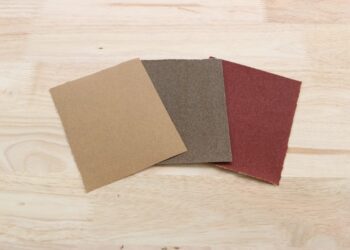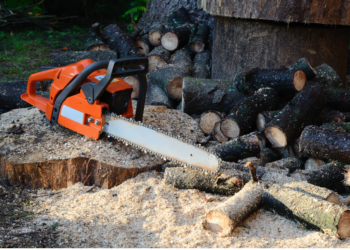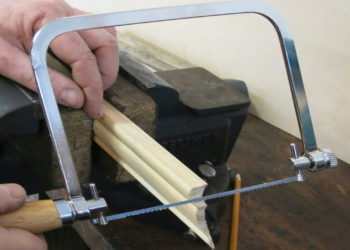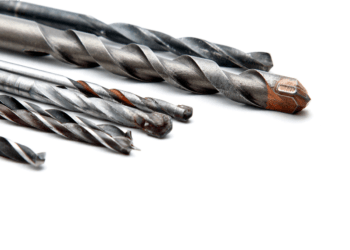Each craft has its own set of tools, and woodworking is no exception. You understand how important it is to have the correct tools in order to produce high-quality end goods on time.
Your muscles provide the power for woodworking hand tools. They’re power tools, yet they’re not powered by electricity. Continue reading for a complete list of hand tools that any woodworker, carpenter, or cabinet builder should own:
Beginners may have difficulty deciding which tools to buy. Start with the basics and add as your skill level increases or the need arises to avoid overspending or buying tools you don’t need. Because every carpenter requires a set of circular saws, grinders, drills, a block plane, a nail punch set, a trimming or utility knife, and so on, the list could go on and on. It is critical to always have the right tool for the job at hand.
Choose a random orbital sander over other sander types for the most versatility when working on projects around the house, such as finishing baseboards or refinishing furniture. When purchasing woodworking tools, look for well-known brands that have a track record of producing high-quality, long-lasting tools that are well worth the money and will last for many years. Invest in reputable brands that offer warranties and, in some cases, lifetime guarantees on their products.
Here are 10 Woodworking Tools Every Woodworker & Carpenter Should Have
Claw Hammer
Let’s start with the claw hammer, which is probably the most fundamental instrument in any home. The finished head, which should be fairly rounded, should counterbalance the claw on one side of the head. The waffle head is the other type of head. When you drive the nail, it creates a characteristic waffle mark on the wood, which is most typically used in construction. Of course, this isn’t the correct nail for woodworking.
Working
A claw hammer that isn’t well balanced in your hand will twist in your hand, making it difficult to drive nails accurately. A claw hammer is generally gripped with your hand at the back of the grip, allowing the head’s weight to do most of the work. Simply aim the driving surface toward the proper nail while sparing the others on your hand.
The 20 oz. a claw hammer is the most typically purchased. The weight of the hammer makes it easy to drive nails, but it is light enough to pull nails easily. While wooden handles are attractive, they may not be able to withstand the strain if you have a lot of nails to pull. Hammers with a steel or even fiberglass handle will be more powerful. However, unlike a hickory handle, these will not absorb the vibrations when driving nails.
For added control and comfort, make sure the fiberglass and metal handles have a rubberized grip. The hardwood-handled hammer will be excellent for decreasing stress on your hand and wrist in cases where you’ll be driving a lot of nails.
Tape Measure
The woodworker’s next essential hand tool is an accurate tape measure. Find one that is at least 25 feet long and retractable. If you go any longer, you’ll have trouble getting it to roll back up. You’ll want to ensure sure the “hook” or tab at the end of the is tightly attached, with no give, because measurements on big scale projects can be particularly susceptible to even the tiniest measurement deviations. Your dimensions may vary by as much as 1/8″ as they become loose. This results in serious accuracy issues in the long run.
Chisel
Every workstation should have a selection of chisels. Woodcarvers aren’t the only ones who use chisels. Chisels are required by each woodworker to clean out joints and saw cuts. Look for high-alloy carbon steel chisels or chromium-vanadium alloyed steel chisels. Hardwood grips are ideal, especially if they are capped with metal. When you hammer on the end of the handle, this will prevent it from being deformed.
You’ll need a range of sizes from 14″ to at least 112″ in 14″ increments. Mortise work is best performed with the smallest chisels. The 34″ and 1″ are ideal for door hinges, while the 112″ is ideal for chipping out. You can also acquire a corner chisel that, like a hole punch, punches a notch in the wood with a hammer stroke.
The cutting edge of most chisels is beveled on both sides, while specialty chisels may only be beveled on the cutting edge. On one side, the bevel will be 20 to 25 degrees down the length of the blade, and flat on the other. Between 4″ and 7″ in length, the blade will be. Make sure you obtain chisels with a comfortable grip. It will be difficult to hold the chisel steady while working if the grip is too small.
Working
When working with your chisel, make sure you use a mallet or a wood hammer to avoid damaging the head. Maintain track of the edge caps, keep them sharp, and grease the metal after each use, and they should last for many years. Get a roll of edge caps if you don’t already have them. This will keep them from bouncing about and being damaged in your toolbox drawers.
Using your chisels necessitates the use of both hands. As the chisel pares away the wood, this gives it more power and control. Bump the chisel with the heel of your off-hand or pound it with a mallet if it needs a bit more “oomph.” If you use a claw hammer too often, it will damage the butt end of your chisel, eventually splitting it.
Instead of using a grinder to sharpen your chisel, you might prefer to use stones. To effectively hone the blades, you’ll need a series of stones with progressively finer grits. Begin with the coarser grade and work your way up to the finest. For optimum results, you may need to use oil to wet the stone. Also, keep the blades honed away from your body.
Screwdriver
Screwdrivers are another essential hand tool for any carpenter. You’ll need star drivers and Torx drivers in addition to Phillips and slot or flathead screwdrivers. A good set of screwdrivers must have high-quality construction. Many of them are composed of soft metal, which strips off the first time you put any “oomph” behind them, rendering them completely unusable.
Long screwdrivers with square blades are particularly heavy duty is required. This provides a significant amount of torque. A small and medium slot screwdriver is also required. You’ll need a screwdriver with a small shank to reach screws that are within deep holes when working on cabinets or in tight spaces in woodworking. A cabinet screwdriver is used to do this. Get yourself a couple of medium Phillips head screwdrivers, as well as a stubby one for those tight spots. A ratcheting screwdriver may also be useful.
Maintenance
When your slot screwdrivers become worn, you can grind them flat if they’re made of high-quality material. However, too much heat will affect the metal’s temper, making it weak and unable to drive or draw screws.
Sliding Bevel
A sliding bevel, also known as a T-Bevel, will come in handy if you’re going to be measuring a lot of angles. It can be set to any angle you want and can be locked at any angle, which makes marking multiple angles a lot faster.
Hand Plane
A hand plane is essential for woodworking versatility. You can square your work, flatten a piece of wood, or add a curve to it. Using a block plane, shape, or chamfer your stock. Instead of spending hours sanding a piece that has been dovetailed, you can use your hand plane to smooth the joint. Your plane can soften the edges of a piece, making it less sharp.
It’s crucial to make sure the hand plane’s blade is razor-sharp. To sharpen the bevel, apply a little oil to the sharpening stone and press the bevel flat against it. Hone the heel by raising it slightly. It will form a burr, which is fine. Simply flip the blade over and rub the flat side against the stone. It will get rid of the burr. With a cap screw, you can adjust the depth of the plane here.
If you’re doing fine work, the blade should be about 1/64″ thick. You can use as little as 1/16″ for more general work. So that you don’t end up arching, roll the pressure from the back of the plane to the front as you finish the cut. To avoid tearing up the outside edge when plaining end grain, plain both ends toward the middle.
Hand Saw
It’s important to invest in a good hand saw. In fact, one of the most valuable additions to your woodworking shop may be a collection of hand saws. You don’t have to – and probably won’t want to – use a power saw for everything. You must be able to feel the response of the wood under the saw blade, as well as the response of the saw blade to the wood. A dovetail saw and a hand miter saw, in addition to a coping and tenon saw, may be useful. In fact, many woodworkers consider a good collection of Japanese saws to be the foundation of their trade.
Start with a fretsaw for woodworkers, which is similar to a coping saw for wood. You’ll also need a mini saw for areas where a chisel won’t suffice. Then you’ll need a good tenon saw and a miter box that you can use with the tenon saw. Other saws with a wide range of cutting surfaces and angles will be added as needed.
Work Bench
In your shop, you’ll need a workbench or work table. Make do with the table for your table saw instead of trying to be noble. Your saw will get in the way because it isn’t big enough or stable enough. Workbench patterns are available in the same way that saw horses are.
Your workbench can be either portable or fixed, with retractable or locking casters. It can be anything you want it to be. Because workbenches are usually based on the amount of space you have, there aren’t any rules about measurements.
If you have the space, a double-sided workbench is ideal, as it allows you to work on both sides of the table from the center of the room, or work with a partner. If it’s against the wall, make sure it doesn’t get so deep that you can’t reach anything that’s been pushed against it. Then it’s just a piled-up mess, and you can’t work on your work table anymore. Whether or not you have storage under your workbench is entirely up to you. Just keep in mind that you must be able to reach everything you keep under the bench.
Random Orbital Sander
A random orbital sander is a step up from the palm sander, which is the “little brother” version. The sanding discs are attached to the sanding pad with a hook and loop (Velcro) on the random orbital sander. The disk’s random movement helps to prevent sanding patterns into your wood. It’s important to make sure that your hardware store has discs in every grit available when using this tool is to make sure that your hardware store has discs in every grit available. Otherwise, you’ll end up with a sander that you can’t use because the sanding pads aren’t available.
Utility Knife
Another useful tool for woodworkers is a good utility knife. There are several types, but the most common is the one that uses disposable blades. For safety, the blade retracts into the grip. The utility knife will be used by the woodworker to clean out mortise joints and scribe wood, among other things.
Make sure to pick tools that are easy to use, and that are appropriate for your skill level. Consider portable workbenches and saws, as well as cordless drills, if you plan to use your tools at various job sites.









